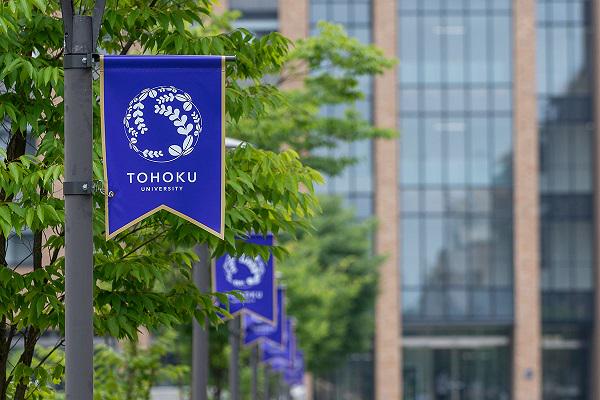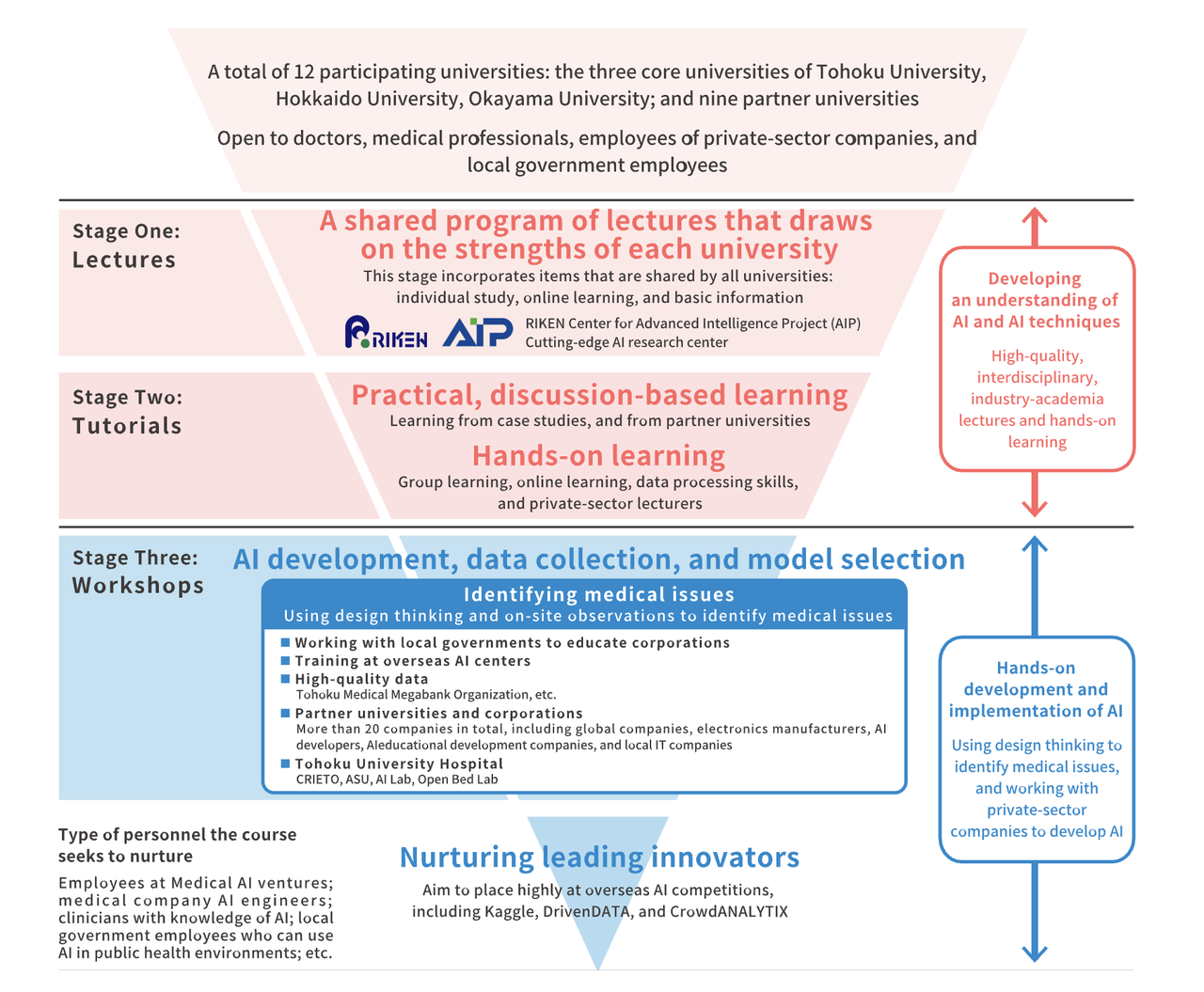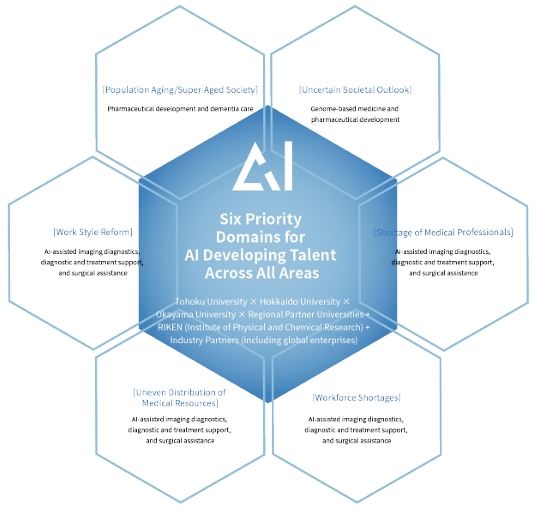Tohoku University: How to Address an Ageing Society through “AI + Healthcare”
Amid the dual challenges of uneven healthcare distribution and accelerating population ageing, Tohoku University, a leading Japanese research institution, has built inter-university networks, designed AI-based medical curricula tailored to local needs, and advanced interdisciplinary, open innovation. These efforts transform regional healthcare challenges into solutions of global significance.
Ageing Society and Healthcare Imbalances
Artificial intelligence (AI), among the most transformative forces in healthcare, is reshaping Japan's medical system. Problems such as dispersed medical regions, unequal access to resources, and shortages of healthcare personnel are increasingly global, particularly in Asia. Japan's "super-aged society" presents both a pressing challenge and a unique opportunity: medical research not only advances diagnostics and treatment but also offers critical pathways to mitigate the effects of ageing.[1] Japan is thus pioneering models of AI–medicine integration that may serve as references for other nations confronting demographic shifts.
As the world's most aged society, Japan faces acute urban–rural disparities.[2] While metropolitan centres host advanced hospitals, rural regions confront "medical desertification". Regional imbalances are stark: western prefectures possess greater resources than eastern areas, leaving residents in Tohoku and Hokkaido particularly disadvantaged.[3] By 2040, many local governments may vanish, and by 2050 one-fifth of residential areas are projected to be depopulated.

Number of Medical Institutions per 100,000 Population (by Secondary Medical Regions, 2014) (Source: Nakamura 2017)[3]
Moreover, Japan is confronted with a significant shortage of medical professionals.[4] The ratio of clinical doctors is severely insufficient (only 2.4 per 1,000 people) and the existing education system has not adequately prepared professionals for AI in healthcare: clinicians often lack technical expertise, while AI specialists struggle to grasp medical contexts. This disconnect stalls many innovations at the laboratory stage, underscoring the urgency of embedding AI literacy in medical higher education.
In response to the evolving demands of smart healthcare, Japan is developing a distinctive path for training next-generation medical professionals. Regional universities, exemplified by Tohoku University, are central in addressing challenges in remote areas lacking major corporate presence. Beyond higher education leadership, Japanese society exhibits unique advantages in the application of medical AI: a comprehensive universal health insurance system provides an ideal environment for AI deployment, a highly educated population accelerates technology adoption, and a mature industry–academia–research collaborative ecosystem collectively fosters promising prospects for both the training of medical AI talent and the practical application of AI technologies.

Tohoku University Official Website
Training Research-Oriented Talent
With the accumulation of clinical big data and the rapid advancement of AI technologies, particularly deep learning, data-driven medical research is demonstrating immense potential to transform healthcare systems and address societal health challenges. Tohoku University has keenly recognized this trend and is driving innovations that push the boundaries of traditional medical education.
In fact, the university's medical school began reforms as early as 2020, with a key highlight being the development of AI-focused medical research. Beyond its United Centers for Advanced Research and Translational Medicine (ART), which applies life sciences methodologies for foundational research, Tohoku University established two new AI departments: one dedicated to basic AI medicine and another to applied AI medicine. These departments bring together talent from both within and outside the graduate school to advance AI medicine collaboratively. Functioning as complementary "wings", one focuses on fundamental AI research, while the other applies cutting-edge technologies in clinical diagnostics, health management, and medical imaging analysis. A dedicated AI healthcare platform department serves not only as a hub for talent cultivation but also as a platform for industry–academia–research collaboration.
This transformation is far from insular. Leveraging its status as a comprehensive university, Tohoku University has engaged in deep collaborations with multiple top-tier institutions both on and off campus. In addition to joint talent development centers with Hokkaido University and Okayama University, the ART has established three core initiatives—"Digital Healthcare Projects", "AI Medical Education Infrastructure", and "Medical AI Research Strategy"—to support programs and practices for training the next generation of medical AI researchers. From the Clinical Research, Innovation and Education Center, Tohoku University Hospital (CRIETO) to the Big Data Medicine Center and the Open Bed Laboratory, the Tohoku Medical Mega-Bank Organization (ToMMo), and the Graduate School of Biomedical Engineering, the university leverages its rich human, big data, and AI resources to tackle complex medical problems and contribute to the creation of a sustainable society.
University Alliances
In 2020, leveraging local healthcare contexts and disciplinary strengths, Tohoku University, under the "Industry-Academia Collaboration Project for Human Resource Development to Accelerate AI Research and Development in the Healthcare Field" program of the Ministry of Education, Culture, Sports, Science and Technology (MEXT), led a collaborative initiative with Hokkaido University and Okayama University: "Global x Leading-Edge AI Research and Development for Solving Problems in the Medical Field".[5] Through inter-university cooperation, the project focuses on the development of ready-to-use medical AI systems and actively promotes their societal application, achieving broad implementation of these technologies in healthcare settings. The project targets six MEXT-designated areas of AI application in medicine: enomic medicine, diagnostic imaging assistant, medical diagnosis and treatment, drug development, dementia care, and surgical assistant.[6] Under this initiative, the three universities jointly established a "Clinical AI" education center, a talent development hub dedicated to leveraging cutting-edge AI research to solve global and local healthcare challenges.

Traditional medical education in Japan faces a shortage of professionals capable of leading practical medical AI R&D. While some healthcare practitioners use AI in their work, no systematic programs previously existed to cultivate these skills. Through the Clinical AI Human Resources Development Program (Medical AI Talent Project), the three universities innovatively promote "bidirectional integration", aiming to train professionals who can apply AI solutions developed within participating universities to a range of fields, including inpatient care, home healthcare, commercial and public-interest-oriented public health, and administrative roles. The program is open to physicians, medical professionals, private-sector employees, and local government staff.
As part of the initiative, Tohoku University, Hokkaido University, and Okayama University offer doctoral and intensive courses. The four-year doctoral program trains experts capable of conducting advanced medical AI R&D, while the one-year intensive course prepares professionals to apply and utilize medical AI. The program also invites instructors from specialized institutions such as the RIKEN Center for Advanced Intelligence Project (AIP), the Artificial Intelligence Research Center (AIRC) at the National Institute of Advanced Industrial Science and Technology (AIST), and the Japanese Association for Medical Artificial Intelligence to guide students in planning future career paths.

In addition, Tohoku University spearheaded the creation of Japan's largest AI talent development alliance composed solely of local universities. The alliance includes the three core universities——Tohoku, Hokkaido, and Okayama, alongside 9 partner universities and over 20 private-sector companies. The AIP, which houses Japan's most advanced AI research infrastructure, has also pledged support.
By forming this alliance, the three universities aim to explore new medical fields, identify unique healthcare challenges across Japan, consolidate locally specific medical issues, and cultivate professionals capable of designing AI-based solutions to address them.[7]
"AI + Healthcare" Innovation Community
Beyond bridging universities and hospitals, Tohoku University is weaving an innovation network that embraces a broader range of actors. By leveraging real-world medical data, this ecosystem feeds research findings back into AI development to create technologies applicable to the medical field.
This spirit of collaboration is deeply rooted in the evolution of medicine itself. From traditional low-molecular compound drugs to today's gene therapies, cell-based therapies, and nucleic acid drugs, the boundaries of medicine are constantly expanding. Since the 21st century, with the rise of biologics and personalized medicine, a single-disciplinary perspective has proven insufficient to address complex healthcare challenges. The integration of computer science and biomedical engineering has pushed medical innovation into an entirely new dimension. Academia, as a driver of medical innovation, is playing an increasingly important role. Beyond chemistry and biology, engineering and information sciences (as well as their convergence) are now seen as indispensable, and cross-disciplinary open innovation is becoming ever more vital.
Of course, the vision is ambitious, while reality remains challenging. No single pharmaceutical company can develop every product independently, making industry-academia-research collaborations with venture capital firms and IT companies essential. Furthermore, public funding for university research often falls short of covering all translational studies, including investigator-initiated clinical trials. Therefore, utilizing investment capital, such as venture funding, to advance research and development is critical. A single university has limited capacity, but forming university alliances and pooling resources from multiple institutions can generate significant impact.
Moreover, while AI in healthcare is a theme with vast potential, the stakeholders driving R&D face distinct difficulties. Physicians and medical institutions, though familiar with medical challenges and equipped with abundant data and ideas, often lack knowledge of AI and maintain limited ties with AI enterprises, making it difficult for them to carry out concrete development. Conversely, IT companies that possess advanced AI technologies may be eager to enter the healthcare sector but lack established networks with doctors and medical institutions. Their limited experience with medical needs and regulatory requirements also makes it difficult to execute comprehensive development in clinical environments.

This is precisely where Tohoku University's breakthrough lies. By constructing an ecosystem that connects AI research in medicine with commercial application, while emphasizing medical needs and the healthcare context, the university has positioned itself as a critical hub. Drawing on its extensive clinical research networks and long-standing expertise in pharmaceutical clinical trials, Tohoku University serves as the key node linking stakeholders. Here, physicians’ needs are conveyed precisely to engineers, technological feasibility is assessed by experts, and companies can identify the most promising projects for investment. This deep integration of industry, academia, and research allows sparks of innovation to be truly transformed into solutions that reshape medical practice. [8]
Building such an ideal ecosystem is inseparable from open innovation, cross-sector collaboration, and accumulated experience. — Professor Toshio Miyata, Center for Translational and Advanced Research Interviewed by The Science News [8]
The approach of seeking solutions based on local medical issues, the open collaboration mechanisms that break down disciplinary silos, and the sustainable development philosophy rooted in deep integration of industry, academia, and research, may offer inspiration to universities worldwide. These experiences are not one-size-fits-all templates, but rather adaptable directions that can be flexibly applied depending on context. For countries exploring pathways to integrate technology and medical education, effective solutions often originate from profound insights into local challenges and innovative, practice-based responses.
References:
1. Onoue et al., "Developing competencies relating to information science and technology in Japanese undergraduate medical education," Medical Teacher, vol. 46, no. sup1, pp. S31-S37, 2024, doi: https://doi.org/10.1080/0142159x.2024.2385199.H.
2. T. Nakamura, K. Hanaoka, and H. Miyazawa, "Medical care provision system and geographical distribution of medical resources in Japan," Community-Based Integrated Care and the Inclusive Society: Recent Social Security Reform in Japan. Singapore: Springer Singapore, 2021, pp. 71-95, doi: https://doi.org/10.1007/978-981-33-4473-0_4
3. T. Nakamura, "Medical institutions," in Mapping health, medical care, and welfare in Japan, H. Miyazawa, Ed. Tokyo: Akashi Shoten, 2017 (in Japanese).
4. Cabinet Office, Government of Japan, "Annual Report on the Aging Society: 2017," 2017. Accessed: Aug. 29, 2025. [Online]. Available: https://www8.cao.go.jp/kourei/english/annualreport/2018/pdf/c1-1.pdf
5. K. Kohsuke, "Greeting," Medical AI Research and Development Center | Hokkaido University Hospital, 2020. https://ai.huhp.hokudai.ac.jp/en/greeting/ (accessed Aug. 29, 2025).
6. 岡山大学大学院 医爾薬学総合研究科, “Clinical AI Human Resources Development Program,” 医療AI人材育成プログラムClinical AI, Feb. 28, 2022. https://clinicalai.hsc.okayama-u.ac.jp/en/ (accessed Aug. 29, 2025).
7. Clinical Al Human Resources Development Program, “MESSAGE | Fusing medicine and AI And applying local solutions to global issues,” 医療AI人材育成拠点プログラム 東北大学病院, 2025. https://www.shp.hosp.tohoku.ac.jp/Clinical_AI/en/message/ (accessed Aug. 29, 2025).
8. The Science News, "Case Studies from Tohoku University at the forefront of medical AI development: Efforts by Professor Toshio Miyata to create an ideal ecosystem — Cross-industrial collaboration is the key, with repeated implementation paving the road to success," ScienceJapan, 2023. https://sj.jst.go.jp/news/202303/n0301-01k.html (accessed Aug. 29, 2025).




